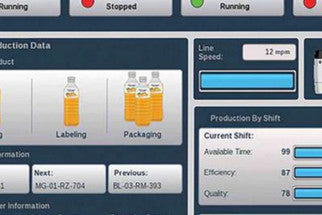
Human Interface Machines - HMIs
Human Machine Interfaces (HMIs) are electronic devices that allow users to interact with and control machines, equipment, and systems. HMIs are widely used in industrial automation, manufacturing, and other applications where human interaction is required to operate and control equipment. In this blog post, we will explore what HMIs are, their key features, and the benefits they offer. What are Human Machine Interfaces (HMIs)? A Human Machine Interface, or HMI, is an electronic device that provides a graphical user interface (GUI) for users to interact with machines and equipment. An HMI typically includes a touch screen display, as well as buttons, knobs, and other physical inputs. Users can use the HMI to monitor the status of equipment, adjust settings, and control the operation of the machine or system. Key Features of HMIs Touch Screen Display The touch screen display is one of the key features of an HMI. The display provides a graphical interface that allows users to view real-time data, such as machine status, production rates, and other important information. The touch screen allows users to interact with the display, selecting and adjusting settings, and controlling the operation of the equipment. Data Logging Many HMIs include data logging capabilities, allowing users to log and review historical data on machine performance, production rates, and other important metrics. This data can be used to identify trends, diagnose problems, and optimize equipment performance. Alarm Management HMIs can be configured to provide alerts and alarms when critical thresholds are reached, such as when a machine is operating outside of specified parameters or when maintenance is required. These alarms can be configured to be visual or audible, and can be sent to operators or maintenance personnel via email or text message. Connectivity HMIs can be connected to other equipment, systems, and databases, providing users with access to real-time data from a variety of sources. This connectivity can help operators to monitor and optimize equipment performance, identify problems quickly, and make data-driven decisions. Benefits of HMIs Improved Efficiency HMIs can help operators to monitor and control equipment more efficiently, reducing downtime and improving productivity. By providing a graphical interface for equipment control and monitoring, HMIs can help operators to quickly identify and diagnose problems, reducing the time required for maintenance and repairs. Improved Safety HMIs can be configured to provide alarms and alerts when equipment is operating outside of safe parameters, reducing the risk of accidents and injuries. By providing real-time data on equipment performance, HMIs can help operators to identify potential safety hazards and take corrective action before accidents occur. Reduced Training Time HMIs can help to reduce training time for operators, as the graphical interface is intuitive and easy to use. This can reduce the time and cost required for operator training, helping organizations to get new equipment up and running quickly. Enhanced Data Management HMIs can help organizations to collect and manage large amounts of data on equipment performance and production rates. This data can be used to identify trends, diagnose problems, and optimize equipment performance, helping organizations to improve efficiency and reduce costs. In conclusion, Human Machine Interfaces (HMIs) are powerful electronic devices that provide operators with a graphical interface to monitor and control equipment. HMIs offer key features such as touch screen displays, data logging, alarm management, and connectivity. The benefits of HMIs include improved efficiency, improved safety, reduced training time, and enhanced data management. HMIs are a critical tool for organizations looking to optimize their equipment performance and increase productivity.
